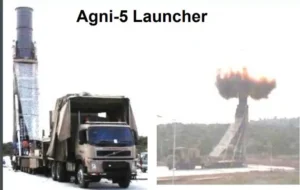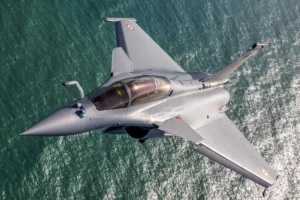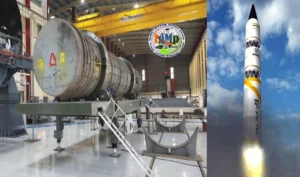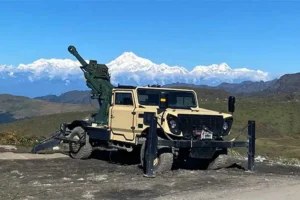New Delhi: India is finalising a Letter of Request (LoR) to the US for the acquisition of 31 MQ-9B Reaper drones. The deal for the drones, worth an estimated $3 billion, was part of the joint statement released during Prime Minister Narendra Modi’s state visit to Washington on June 22 this year.
An LoR is the first stage of an arms contract between the US government and a foreign country. This is followed by the Letter of Acceptance (LoA) from the US Department of Defence, culminating in what the US calls a Foreign Military Sale.
The deal could be signed before the Modi government enters elections in March 2024.
What’s The Deal About?
Fifteen of the 31 drones are meant for the Indian Navy and eight each for the Indian Air Force and the Army. The first ten drones will be delivered in flyaway condition within four years of the contract being signed. The remaining 21 drones are to be assembled in India.
Sources indicate that the procurement of the MQ-9Bs could be accompanied by two separate contracts. The first will be a Performance Based Logistics Agreement and the creation of a MRO facility in India.
The second will be a contract between General Atomics and the Defence Research and Development Organisation (DRDO) for the indigenous design and development of High Altitude Long Endurance (HALE) platforms like the MQ-9 which fly at a slow speed, and over 15 km above the earth.
The Firepower
India’s defence ministry also wants the MQ-9s to carry indigenously developed software defined radios and indigenous missiles like the BVR Astra.
Astra is an Indian family of all weather beyond-visual-range air-to-air missiles developed by the DRDO.
The MQ-9B has a range of over 1,850 km and can stay airborne for over 24 hours. It has nine hard points from which it can carry bombs, missiles, and sensors to perform multiple missions — ranging from long range maritime surveillance to anti-submarine warfare and air to surface strikes.
The Indian Navy currently operates two unarmed versions of the MQ-9B which it obtained on lease from the US in 2020.
The largest defence deal between the two countries is being seen as a step towards bolstering India-US strategic partnership.
The Indian Navy has also been operating two MQ-9 Sea Guardians obtained on lease from the US since 2020. These were inducted under the Indian Navy’s emergency powers in the wake of the Ladakh standoff with China that same year and meant to keep a watch on its People’s Liberation Army’s (PLA) Indian Ocean deployments. Both remotely piloted aircraft systems (RPAs) are based at INS Rajali, a naval air station 70 km west of Chennai.
Deals So Far
The deals will cement the US’ position as India’s second largest supplier of defence hardware after Russia. Since 2008, the US has sold India $18 billion worth of military hardware. The last one being a $2.1 billion purchase of 24 MH-60R Seahawk naval helicopters, signed in February 2020.
The MQ-9 acquisition has been in the pipeline for six years. In 2017, the navy proposed the purchase of 22 Sea Guardians. The following year, the defence ministry converted the case into a tri-services acquisition of 30 drones — ten units for each service.
“The MQ-9 is satellite-steered, can float above the target at 45,000 feet and stay on task for 35 hours, using radar and electronic support measures to locate the enemy — it could be anywhere, the Gulf of Aden or the Malacca Straits or in Eastern Ladakh,” a senior defence official says.
The drones will be delivered within four years. Also with this deal India will become the first non-NATO state to receive armed unmanned aerial vehicles (UAVs) from the US for deployment along its borders and also the Indian Ocean region.
Comparing the MQ-9 sea, the MQ-9B, sometimes called the Predator-B, is a larger version of the Predator RPA which first flew in 1994. The Predator-series RPAs are since the lynchpin of the US’s global presence, deployed in hot spots around the world. On March 14 this year, a Russian Su-27 fighter jet intercepted a MQ-9 Reaper drone near Crimea forcing it to crash.
Comparing the MQ–9 sea guardian procured on lease and the new predator in pipeline, a senior officer said, “Performance has been uprated with a new radar and also its ceiling has been lifted up a little bit. It has got a due regard radar, which means it has a radar that is permitted to fly in a controlled air space. The current drone is flying at around 26,000 feet and it is a leased aircraft, not a military aircraft. Once we procure our own aircraft it can work under military rules. They are not very tightly bound like the civil aircraft are.”
“Area coverage and endurance of these crafts is a game changer that even satellite coverage can not provide. Satellites are good for strategic surveillance, and in tactical areas these aircraft with their endurance and their operating height are really effective,” said Rear Admiral Sudhir Pillai (Retd).
The Drone Frenzy
With drone warfare dominating the battlefields, drone attacks have become a major menace along India’s border with China which has been a major concern for the Indian Army.
In December 2022, the IAF had to scramble its fighter jets quite a few times to counter air violations by Chinese drones in Arunachal Pradesh.
China has also deployed drones in Tibet. However, it is not only China that poses a threat. Pakistan is also a threat on the western borders as far as drone technology is concerned. In June 2021, a Pakistan-based terror outfit attacked the Indian Army establishment in Jammu and Kashmir using drones. They have been sighted hundreds of times since then.
Pakistan has developed UAVs and unmanned combat aerial vehicles (UCAVs) in collaboration with China. There is a concern that Turkey’s impressive advancement in drones technology can lead to transfer of technology to Pakistan. In such a scenario, possible procurement of Predator drones from the US is a relief in the form of effective surveillance at the Line of Actual Control (LAC), the Line of Control (LoC) and the Indian Ocean Region.
“The US, Russia, China, and interestingly Turkey have developed drone technology. So yes, it is a cause of concern. They have counter drone capacity and we need to work on that. Presently, there is a void in all three services as far as drone technology and surveillance is concerned. We need to fill that void. We are dependent on foreign technology and we are working on indigenous technology,” says Lt Gen Vinod G Khandare (Retd), Principal Advisor, Ministry of Defence.
Drones are the future in warfare, and a family of drones include small, medium and large drones, with a variety of payloads. “India needs to grow fast in manufacturing drones,” the General adds.
Source link
#MQ9 #drones #delivered #years #contract








